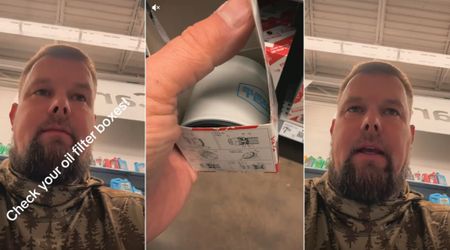Scammers Target X’s Iconic Blue Check Mark Amid Verification Changes; How to Stay Safe

In the wake of transitioning from Twitter to X, the platform has witnessed significant changes, notably in the account verification process. The iconic blue check mark, indicating a verified profile, has become a focal point, creating controversies and opening avenues for scammers to exploit unsuspecting users, per Fox News.

X's verification evolution
Before Elon Musk's takeover, Twitter Blue, or the blue check mark, was reserved for well-known figures such as celebrities, politicians, journalists, or organizational entities. Verification typically involves direct communication from Twitter to confirm identity. However, with Elon Musk at the helm, X's subscription-based model allows almost anyone to obtain the blue check mark for a monthly fee. Higher payments even unlock a gold check mark, usually designated for businesses. This subscription not only ensures verification but also provides additional perks like tweet editing, reduced ads, and potentially increased tweet visibility. Some users have enabled settings allowing messages only from verified accounts.
Scams exploiting X's verification chaos
The democratization of the blue check mark has inadvertently given rise to scams, requiring users to not only secure verification for better platform utilization but to also stay vigilant against scammers leveraging the coveted symbol. Three prevalent scams are emerging amidst X's verification-change chaos.
Blue-tick scammers: Individuals, termed blue-tick scammers, pay for the blue-check verification on X and employ a specific method. They target users expressing dissatisfaction, especially regarding poor customer service. Exploiting complaints, these scammers aim to trick users into divulging bank details by promising refunds. An illustrative case occurred in June 2023 when cybercriminals targeted EasyJet passengers on X with fake profiles, preying on those seeking refunds after flight cancellations.

Elon Musk impersonators: Fake accounts impersonating well-known personalities, including Elon Musk, have become commonplace. Despite lacking official verification, these accounts, often used for cryptocurrency scams, may appear authentic at first glance. Scammers mimic Elon Musk's profiles or companies, promoting fraudulent cryptocurrency ventures and urging users to transfer money to the scammer's wallet.
Bots posing as scantily-clad women: A classic scam adapted to social media involves bots posing as scantily-clad women. While not foolproof, this scam targets users through direct messages from verified X accounts. Users should exercise caution as these could be legitimate users or scams, including "sexbots," especially prevalent with recent changes on X and the introduction of AI.

How can you safeguard yourself?
Even if an individual doesn't actively use X, the changes highlight broader concerns regarding online verification and potential misuse. Scammers adopting similar tactics may target users on other frequented platforms. Staying informed about these scams and their methodologies is crucial for online safety. X acknowledges these scams, and eligibility requirements for Premium subscriptions now consider recent changes to a user's photo, display name, or username. To protect against scams on social media platforms like X, awareness of emerging scams and staying updated on preventive measures is essential.
It's crucial to adopt a proactive approach and implement various security measures. First and foremost, avoid sharing sensitive information with strangers to protect your personal data. Exercise skepticism by thoroughly investigating any suspicious X accounts that come to your attention. Furthermore, fortify your account by using strong and unique passwords, changing them regularly to enhance security. Consider enabling two-factor authentication, adding an extra layer of protection to your X accounts. Review and adjust your privacy settings to limit the visibility of your posts and profile information, maintaining control over who can access your content. Additionally, always verify the credibility of information before sharing it on the platform. Installing reliable antivirus software on your devices is paramount in safeguarding against malware and potential scams that could compromise your security on X.
In case you encounter scammers or suspicious accounts, take swift action by deleting and reporting them to X. This not only protects you but also contributes to the overall safety of the platform. Stay informed about the latest security updates and threats by keeping your software and apps updated, ensuring that you have the latest protection against emerging risks.
Lastly, fine-tune your privacy settings to control followers effectively, limiting access through specific privacy configurations. By adhering to these practices, you can create a safer online experience for yourself on X.





















